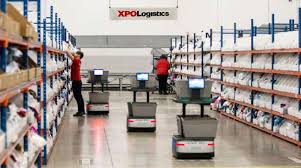Logistics and supply chains are being fundamentally reshaped through the integration of artificial intelligence (AI) and sophisticated robotics. These advancements are not only speeding up processes but also boosting efficiency and promoting sustainability. With the ever-growing need for quicker deliveries and continuous process improvements, automation is emerging as a vital factor for future success.
Enhancing Warehouse Operations
One of the most noticeable changes is in warehouse operations. Autonomous and collaborative robots are transforming the way products are picked, sorted, and handled. Working alongside human staff, these machines help reduce physical strain and significantly improve operational productivity. AI also refines warehouse navigation and forecasts real-time demand, enabling companies to manage inventory more effectively, minimize waste, and cut costs associated with surplus or insufficient stock.
Improving Cold Chain Management
In industries where maintaining specific temperatures is crucial—like pharmaceuticals and food—AI is proving indispensable. By leveraging IoT sensors combined with smart algorithms, companies can continuously monitor conditions along the cold chain. This precise control helps to reduce spoilage, prevent damage, and build greater trust with consumers. Additionally, rapid detection and correction of any anomalies enhance overall logistical performance.
Revolutionizing Last-Mile Delivery with Autonomous Vehicles and Drones
The final stage of delivery, known as the last-mile, is often the most challenging and expensive. Autonomous vehicles and drones are beginning to revolutionize this phase. AI-powered vehicles can determine the most efficient routes based on traffic and road conditions, ensuring safer and faster deliveries while cutting down on costs. Meanwhile, drones are being explored for delivering small packages, potentially slashing delivery times and boosting efficiency in both urban centers and remote areas. As autonomous driving technology evolves, its broader application in logistics is expected to grow.
Optimizing Demand Forecasting and Route Planning
Beyond physical operations, AI is a powerful tool for predicting customer demand and optimizing transport routes. Machine learning algorithms analyze extensive historical data, market trends, and various external factors to forecast demand accurately. This precision aids in better inventory management, preventing both overstock and shortages. Simultaneously, AI’s real-time route optimization reduces travel time and fuel usage, resulting in significant cost savings and a lower environmental impact.
Driving Sustainability Through Technology
Sustainability is increasingly at the forefront of corporate strategies, and AI plays a key role in this transition. By fine-tuning operations, AI can help reduce energy usage and CO2 emissions. Continuous monitoring of energy efficiency across the supply chain allows companies to implement improvements that lessen their environmental footprint. Many businesses are already adopting greener practices, such as utilizing electric vehicles and eco-friendly infrastructure. AI provides the necessary tools to monitor and further enhance these sustainability efforts.
Navigating Challenges and Embracing Opportunities
While the benefits of AI and robotics are substantial, there are also challenges to consider. Adopting these technologies requires considerable investment in new infrastructure and workforce training. Companies must also adjust to the shift towards automated systems and new operational models. Nonetheless, the potential benefits far surpass these hurdles. Firms that invest in AI and automation are likely to gain a competitive advantage by enhancing efficiency and offering superior service, positioning themselves well to meet the future demands of a global market.
Final Thoughts
The integration of advanced AI and robotics is set to transform the logistics and supply chain landscape. As demands for quicker, more efficient operations rise, these technologies become essential for achieving competitiveness, sustainability, and innovation. Organizations that start embracing AI and automation now will be better prepared to face future challenges and satisfy the needs of an ever-changing global marketplace.





